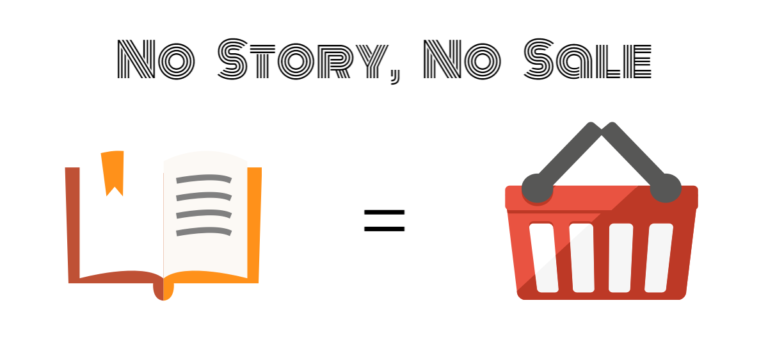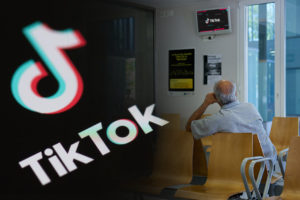Marketing is all about telling a story. You’ve probably heard some variation of this a thousand times, but how often do we actually see that playing out in real life?
It seems like all too often, solopreneurs and freelancers fail to give storytelling the kind of emphasis it deserves. It’s easy to fall into a trap of thinking that you don’t have a story to tell.
As a solopreneur, however, you have the opportunity to put yourself front and center in your brand storytelling. And when you do this in an engaging, relatable way, it will lead to real sales increases.
The Importance Of Forming An Emotional Connection
As much as we’d like to think of ourselves as logical decision-makers, that typically isn’t the case. While we might use logic while doing research about a product or service, the final decision is often largely based on our emotions.
If you’ve ever had a potential client tell you no after they were stuck in a terrible commute and spilled their morning coffee all over themselves, you know how easily a person’s emotions can completely change what would otherwise be a “logical” decision.
The good news is that with strong storytelling, you can form positive emotional associations with you and your brand. The emotions you evoke with your stories go a long way in defining how people perceive you, creating a stronger connection in your audience’s mind between you and the problem you solve for them.
People may not always remember the logical arguments about why they should pick your business, but they will usually remember how they felt while interacting with you or your content. Using storytelling to foster emotional connections is key to improving brand awareness and conversions.
Customizing Your Story For Your Audience
Perhaps the most important storytelling tactic is to adapt your story to the interests and needs of your target audience. If you run a photography business, the story you tell to connect with an engaged couple in need of wedding photos is probably going to be quite different from a business owner who needs product photography for their website.
Each story you tell — be it in a blog post, video or social media post — must keep the target audience in mind. It’s okay if you target multiple audiences. But you need to be ready to adapt your storytelling as needed.
Digital products like Walnut can even help you be a better storyteller in non-storytelling moments. Take your brand’s average sales cycle, for example. Walnut is a platform that helps software entrepreneurs customize their product demos for their prospects — no coding skills necessary. By providing a custom-made experience, you enable the demo to tell a better story to the customer about how you can effectively solve their problem.
At each stage of the customer journey, adapting the stories you tell will require increasing your knowledge of your target audience. From third-party research to in-person meetings, these resources can make all the difference for your stories’ effectiveness.
Key Storytelling Tactics
Of course, knowing the interests and needs of the target audience is only the first step to effective storytelling. Here are some important principles to ensure your stories get the results you need:
Make it human: This is especially important for solopreneurs. We don’t really connect with faceless corporations. But put a human face in front of the camera, and people have a much easier time connecting with your brand. Don’t be afraid to put yourself out there, sharing why you started your business in the first place and why you continue to do what you do.
Keep it simple: You’re not writing a murder-mystery thriller. Your stories should be easy to follow, with a clear beginning, middle and end. For example, you could tell the story of how you recognized a problem in your industry, the process you went through to come up with your solution and how you’ve turned it into a way to successfully help your clients.
Let your clients tell their stories: No matter what the industry, client testimonials and word of mouth are always going to be more convincing than any marketing message you come up with on your own. When possible, get your current customers actively involved in your storytelling process. Let them share how you helped solve their problems. Feature them on social media and in blog posts. This makes the story much more relatable to prospects who are facing similar challenges.
Don’t limit yourself to a single platform: Maybe you’re most comfortable with social media posts. But depending on your industry, a case study could be just as important for telling stories that convert prospects. Others are visual learners, and are going to prefer a video highlighting one of your clients. The more storytelling styles you use, the greater your reach — and sales success — will be.
Time To Sharpen The Storytelling Toolkit
Even if you’ve never had any aspirations of writing a screenplay or the “next great American novel,” that doesn’t mean you don’t have what it takes to become an expert storyteller for your brand. After all, as a solopreneur, you ARE your brand. Who else knows your story better than you do?
When you focus on the things that make you relatable — and the things that matter most to your target audience — you can tell engaging stories that help prospects connect with you on an emotional level. When that happens, more conversions and more opportunities with higher- paying clients are sure to follow.
For full article visit Forbes
Our work is always to Earn Trust, Build Reputation, Widen Influence to grow your brand and business.






